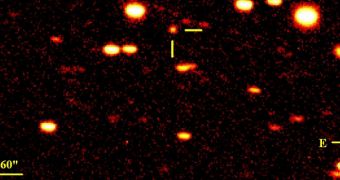A comet whose discovery was announced on Monday, September 24, by Russian astronomers Vitali Nevski and Artyom Novichonok, may pass very close to Earth in late 2013. The object may even be visible to the naked eye in the daytime, albeit for only a brief period.
The two astronomers named the space rock they discovered Comet ISON, but its official designation is C/2012 S1. The duo discovered the object using a 15.7-inch (0.4-meter) reflecting telescope based at the International Scientific Optical Network (ISON.
At this point, the comet is no less than 100,000 times fainter than the faintest star that can be seen in the night sky with the unaided eye. It is flying around 1 billion kilometers (625 million miles) away from Earth, and around 939 million kilometers (584 million miles) away from the Sun, Space reports.
At its point of closest approach, which will be achieved on November 28, 2013, the comet will pass within 1.2 million kilometers (800,000 miles) of Earth.

 14 DAY TRIAL //
14 DAY TRIAL //